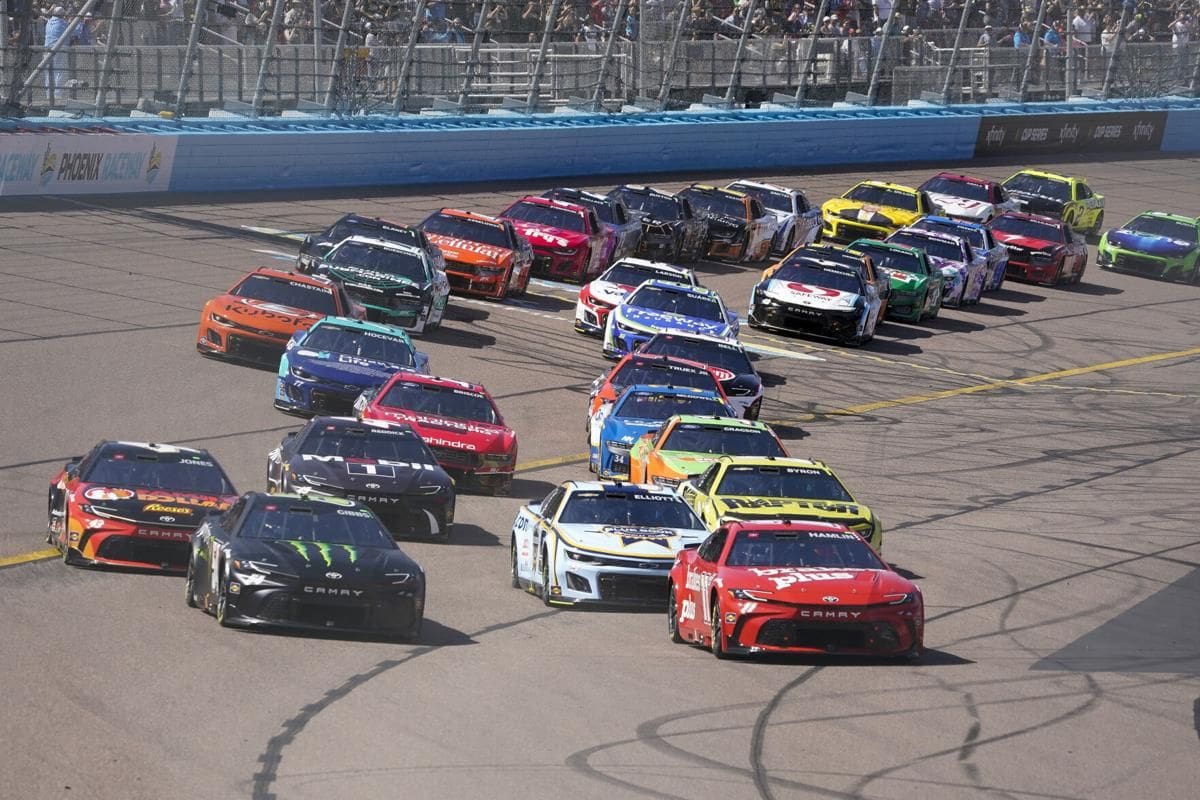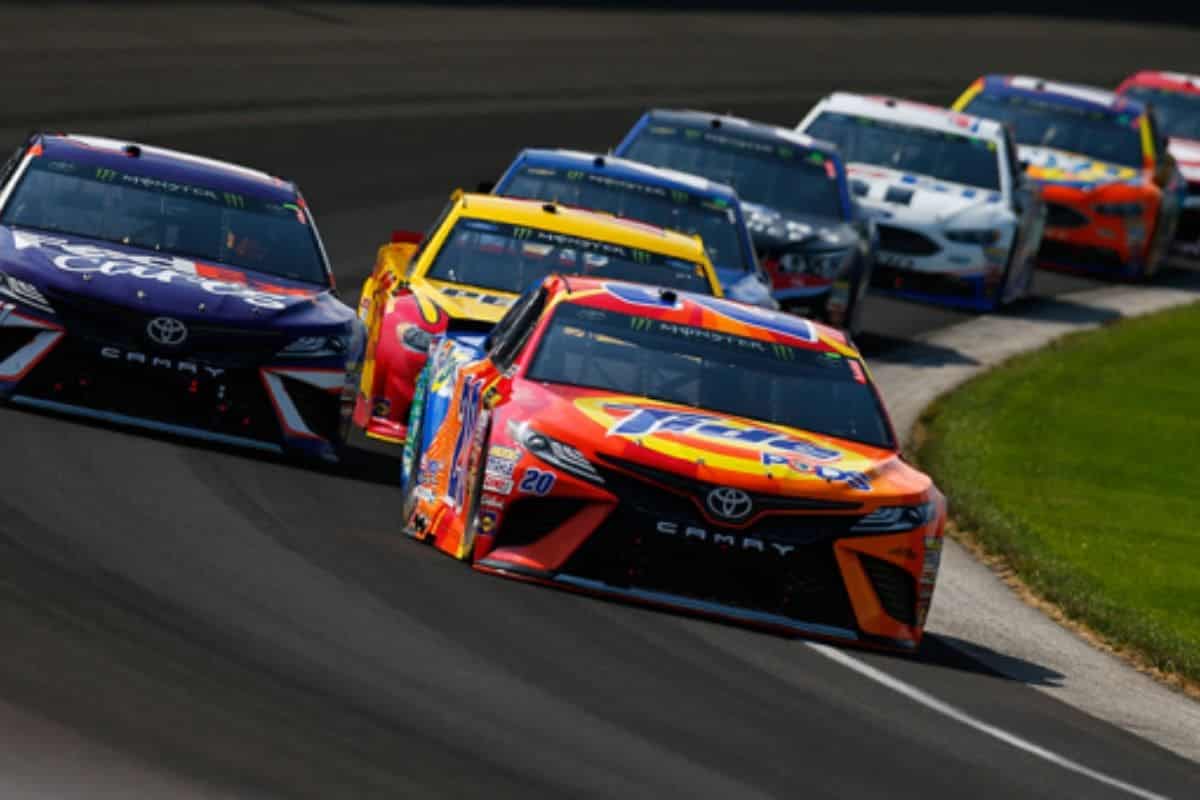Dale Jarrett on Brickyard’s Hidden Challenge: Dale Jarrett’s candid assessment of the Indianapolis Motor Speedway‘s distinctive challenges offers an essential perspective for understanding NASCAR’s complexities at the Brickyard. Highlighting the 1994 Brickyard 400 debut, Jarrett reveals the various difficulties drivers encounter, ranging from the track’s visual distractions to its demanding layout. His observations emphasize the intricate balance of mental and physical endurance required to succeed. As NASCAR gears up for the 2024 Brickyard 400, Jarrett’s insights prompt a closer examination of how contemporary drivers will navigate these persistent hurdles, raising questions about strategies and innovations.
Key Highlights
- Dale Jarrett faced visual distractions and track familiarity challenges during the Brickyard 400 debut.
- The limited adaptation time in 1994 impacted Dale Jarrett’s performance significantly.
- Jarrett’s initial race at the Brickyard ended in a crash, placing him 40th.
- The mental pressure from the venue’s legacy adds complexity for drivers.
- Drivers must quickly adapt to the track’s unique layout, racing lines, and braking points.
NASCAR Returns to Indianapolis Motor Speedway
As NASCAR readies for its much-anticipated comeback to the Indianapolis Motor Speedway in July 2024, the historic 2.5-mile oval promises to test the mechanical skill and tactical expertise of teams and drivers alike. This venue, often referred to as the Racing Capital of the World, showcases the peak of motorsports engineering and strategy.
The unique layout of the track, characterized by its long straightaways and tight, flat turns, demands a meticulous balance of aerodynamic efficiency and mechanical grip. The 2024 event will celebrate not only NASCAR’s roots but also the evolution of racing technology and strategy over the past three decades. Teams will need to optimize their setups to handle the high-speed demands of the straightaways while ensuring stability and precision in the corners. Suspension tuning, tire management, and aerodynamic adjustments will be critical factors in achieving competitive lap times.
Driver skill will also be put to the test, as the Brickyard’s unique challenges require precise throttle control, braking, and corner entry techniques. The track’s surface, known for its abrasive nature, will test tire durability and necessitate strategic pit stops to maintain top performance throughout the race duration.
Furthermore, the return to this iconic venue is expected to draw substantial spectator interest, reminiscent of the inaugural Brickyard 400 that saw an unprecedented 257,325 fans in attendance. The combination of historical significance and technical challenges makes the 2024 race a highly anticipated event, promising to deliver a spectacle that honors NASCAR’s storied past while showcasing the sport’s advancements in technology and competition.
Dale Jarrett Reflects on the 1994 Debut
In reflecting on the 1994 debut of NASCAR at Indianapolis Motor Speedway, Dale Jarrett recounted the overwhelming atmosphere and unique challenges of competing at such a storied and demanding venue. The 2.5-mile-long rectangular oval, renowned for its historical importance and complex demands, presented a formidable challenge even for seasoned drivers. Jarrett highlighted the psychological aspect of racing at a track with such a rich legacy, emphasizing how the prestige and grandeur of Indianapolis Motor Speedway could be both inspiring and challenging.
The track’s dimensions, unchanged since its inception in 1909, demand precision and focus. Jarrett noted the importance of mastering the unique layout, characterized by its long straightaways and sharp, 90-degree corners. This configuration requires a careful balance between speed and control, necessitating precise braking points and best corner exits to maintain competitive lap times. The sheer scale of the venue, packed with a capacity crowd, added another layer of complexity, as drivers had to navigate not only the physical demands of the track but also the psychological pressure of performing in front of an immense audience.
“I’m gonna fast forward to the start of the race in 1994, how different everything looked with this facility being packed full of people.” – Jarrett
Jarrett’s reflection also touched on the tactical aspects of racing at Indianapolis. Tire management, aerodynamic efficiency, and fuel strategy were critical components that could make or break a race. The 1994 debut highlighted the necessity for teams to adapt quickly to the unique demands of the Brickyard, as any miscalculation could lead to significant performance deficits.
Jarrett’s Experience and Results at the Debut Race
Dale Jarrett’s debut encounter at the Brickyard in 1994 highlighted the immense psychological and practical challenges intrinsic to competing at the Indianapolis Motor Speedway. As he recalled, the shift from practice to race conditions was abrupt. The visual stimuli and the sheer number of spectators created a distinct distraction, complicating the task of finding his marks on the track.
“As we took the green flag and drove off into Turn One, you had to catch yourself, not to be paying attention to how different it looked, because what we had been seeing in the test, during practice, during qualifying, was nothing like what this looked like as we went down into Turn One. So trying to find your marks and not be paying attention to all the fans that were there was incredibly difficult at that time.” – Jarrett
Jarrett’s performance in the inaugural Brickyard 400 stands as proof of these challenges. Starting from the 14th position, Jarrett struggled to adjust to the race-day environment and ultimately finished in 40th place, his poorest result of the 1994 season. His No. 18 Chevrolet, managed by Joe Gibbs Racing, was involved in a crash after completing 99 laps, cutting short his race and highlighting the circuit’s difficulty.
What sticks out in @DaleJarrett's mind from the inaugural race at the Brickyard in 1994? 🏁
"Trying to find your marks and not pay attention to all the fans that were there." pic.twitter.com/9ZvZIeueoX
— Dirty Mo Media (@DirtyMoMedia) July 18, 2024
Key factors impacting Jarrett’s debut performance included:
- Visual Distractions: The overpowering presence of fans and the visual contrast between practice and race conditions.
- Track Familiarity: Despite extensive practice sessions, the race setting presented unforeseen challenges.
- Adaptation Time: The limited time to acclimate to race-day dynamics, including car handling and competitor behavior.
Despite this initial setback, Jarrett’s subsequent performances at the Brickyard showed notable improvement. His ability to adjust and learn from the first race’s challenges is evident in his future results, where he finished no lower than 3rd place in the next three races at Indianapolis, including a victory.
Historical Significance and Recent Developments
The Indianapolis Motor Speedway‘s storied history and its recent adoption of Next Gen cars mark a remarkable evolution in NASCAR, blending tradition with cutting-edge technology. This track, often dubbed the ‘Racing Capital of the World,’ has long been a crucible where the mettle of NASCAR’s elite drivers is tested. Its 2.5-mile oval configuration demands not only precise skills but also mental strength, as evidenced by the list of past winners that reads like a hall of fame roster—Jeff Gordon, Jimmie Johnson, Kevin Harvick, Tony Stewart, Kyle Busch, and Dale Jarrett.
The introduction of Next Gen cars to the Brickyard represents a noteworthy shift, promising to alter the dynamics of this historic race. These vehicles come equipped with inventive features such as independent rear suspension, a sealed underbody, and a symmetric body design, which collectively improve performance and safety. These technological advancements aim to reduce the aerodynamic differences that have previously influenced race outcomes, ushering in a new era of competition.
Historically, the Brickyard 400 has been a venue where NASCAR legends have cemented their legacies. The challenge of mastering this iconic track, with its unique combination of long straights and tight corners, has always been challenging. The psychological pressure of performing in front of a vast audience adds another layer of complexity, often separating the great from the simply good.
The recent developments in car technology promise to enhance the racing experience, making strategy and driver skill even more crucial. As NASCAR continues to evolve, the Brickyard remains a cornerstone of its rich tapestry, embodying the sport’s enduring allure and relentless pursuit of excellence.
What to Expect at the 2024 Brickyard 400
Given the historical significance and recent technological advancements, the 2024 Brickyard 400 promises a compelling blend of tradition and innovation, especially as drivers adapt to the return of the iconic four-turn oval with Next Gen cars. This shift from the Grand Prix Circuit back to the traditional layout introduces a new set of challenges and opportunities, particularly as it marks the initial instance of these advanced vehicles competing on this storied track.
Next Gen cars, introduced in 2022, offer improved aerodynamics, increased downforce, and upgraded safety features. However, their performance on the temperature-sensitive Brickyard 400 track remains untested. Teams will need to manage variables such as tire wear, fuel consumption, and aerodynamic balance to stay competitive. The track’s sensitivity to temperature fluctuations will necessitate constant adjustments, pushing both drivers and engineers to the limits of their expertise.
- Temperature Sensitivity: The track’s well-known response to temperature changes will require teams to make real-time adjustments to optimize car handling and maintain peak performance.
- Next Gen Car Dynamics: These vehicles come with new aerodynamic packages and mechanical setups, demanding a fresh approach to strategies and pit stops.
- Driver Adaptation: Returning to the oval layout will test drivers’ ability to quickly adapt to different racing lines, braking points, and overtaking maneuvers.
News in Brief: Dale Jarrett on Brickyard’s Hidden Challenge
Dale Jarrett’s reflections on the Indianapolis Motor Speedway highlights the important challenges faced by NASCAR drivers, highlighting the mental and physical demands required to master its intricate layout.
The 1994 Brickyard 400 debut showcased the intense pressures and visual distractions inherent in this iconic track.
As NASCAR prepares for the 2024 Brickyard 400, understanding these historical insights and detailed complexities remains essential for competitors aiming to navigate this formidable venue with precision and concentration.
ALSO READ: Dale Jarrett Bold Pick: Ryan Blaney’s Road to NASCAR Championship



